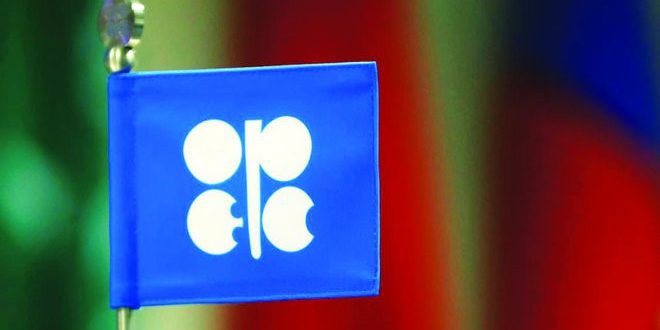Two months ago in Algeria everything seemed calm and quiet for OPEC. but it seems that this was the calm before the storm. When OPEC ministers next meet in December in the cold weather of Vienna. the meeting will be very heated.
The Algerian capital of Algiers hosted the last meeting of the Joint Ministerial Monitoring Committee. a body tasked with overseeing the implementation of the agreement between OPEC and their non-OPEC counterpart. known as the Declaration of Cooperation.
The JMMC meeting coincided with the celebration of the second anniversary of the Algerian Accord. which laid the foundation for the 24 countries to strike an alliance (OPEC+) to cut production to restore market stability.
The sentiment of the market and of the producers in Algeria was totally different from today. Then everyone was expecting Brent oil prices to go up. hitting $90 by the end of the year. The logic behind this forecast was mainly due to the belief that the US embargo on Iranian oil shipments would hit hard and that OPEC would not be able to compensate for the loss of Iranian crude.
On Thursday West Texas Intermediate (WTI) fell by 20 percent. entering a bear market. On Friday. Brent followed and entered a bear market after falling below $70. and now its structure is back to contango. where future oil prices are higher than current ones. which makes traders store crude for future sales. Contango is a sign that the market is oversupplied at the moment.
So what has happened since September?
First. an oversupply of crude is expected to emerge. For a start. numbers show an increase in production in October from Saudi Arabia and Russia. the biggest two producers in the alliance of OPEC+. Saudi Arabia pumped 10.7 million barrels per day (bpd) and Russia produced 11.4 million bpd. In the US shale oil production also surged. based on available public data.
Another reason for the belief in an oversupply is that the US Government gave waivers to eight large consumers of Iranian oil. which means that Iranian supply to the market won’t be impacted heavily at a time when everyone else in OPEC is increasing production. including Iraq. which is pumping at record levels for the second month in a row. Even Libya. which couldn’t raise and sustain production for two years at 1 million bpd. is now adding more crude and aiming to raise output to the highest levels in four years.
All these developments are taking place while demand growth for oil is expected to decelerate in the coming months on the back of higher oil prices over the past few months. and as the trade war between the US and China will impact growth of the Chinese economy. the largest importer of oil.
So where will oil prices head next? Will we see Brent at $70 or below next year. or will prices go up?
The answer always depends on the decision of producers. The Declaration of Cooperation is due to expire in December and without it countries won’t be obliged to cut production.
The most likely scenario in this case is a “free for all“ production. which is what’s happening now. Every producer is opening the tabs.
Oil prices at $70 or above is never the best choice for the consumers and Russia is in that camp. For OPEC. oil prices below $70 isn’t bad unless they reach $60 or below. A reasonable price for OPEC to balance their fiscal budgets next year will be $60 to $80.
For now. any action in December — as the production cuts should end — depends on price levels in December.
This weekend. Abu Dhabi hosts the latest Joint Ministerial Monitoring Committee (JMMC) of the OPEC+. Although JMMC does not have any formal decision-making power. it provides indications on the group’s perspective and intentions.
The situation of the JMMC shows that there is a big discord among members. Iran is calling for the termination of the JMMC and its offshoot. the Joint Technical Committee (JTC). and now there is a rumor that the Saudis are considering a scenario to exit OPEC. A Saudi-based think-tank. the King Abdullah Petroleum Studies and Research Center. is conducting a study on the possible scenarios for the market if Saudi Arabia exited the producer group.
But no matter what the situation. OPEC will remain the most effective tool to correct prices and restore market balance. That said. the next question is what will happen to prices?
Despite all the negative sentiments and the expectation of a higher non-OPEC supply and lower demand. oil prices this winter may go up. as supply risks remain in Iraq. Libya. Nigeria and Venezuela. while cold winter weather could boost short-term demand.
OPEC oil supply looks roughly flat in aggregate in 2018 and 2019.
The efforts by Saudi Arabia. the UAE and Kuwait to offset shortages from other producers won’t be enough.
The market is in need of medium and heavy crude with higher sulfur (sour grades). The market is awash with lighter and sweeter grades and that is offsetting shortages but not supporting refining margins. which made refiners at one point go back to outsourcing the heavier grades at all cost.
The pressing issue that no one takes seriously is the high depletion and decline rates at fields next year and in 2020. and the shortage of clean fuel in 2020 owing to the implementation of the International Maritime Organization’s new rules for fuel. For these reasons. I think that 2019 won’t be a bad year for prices and OPEC.
 Iran Energy News Oil, Gas, Petrochemical and Energy Field Specialized Channel
Iran Energy News Oil, Gas, Petrochemical and Energy Field Specialized Channel




